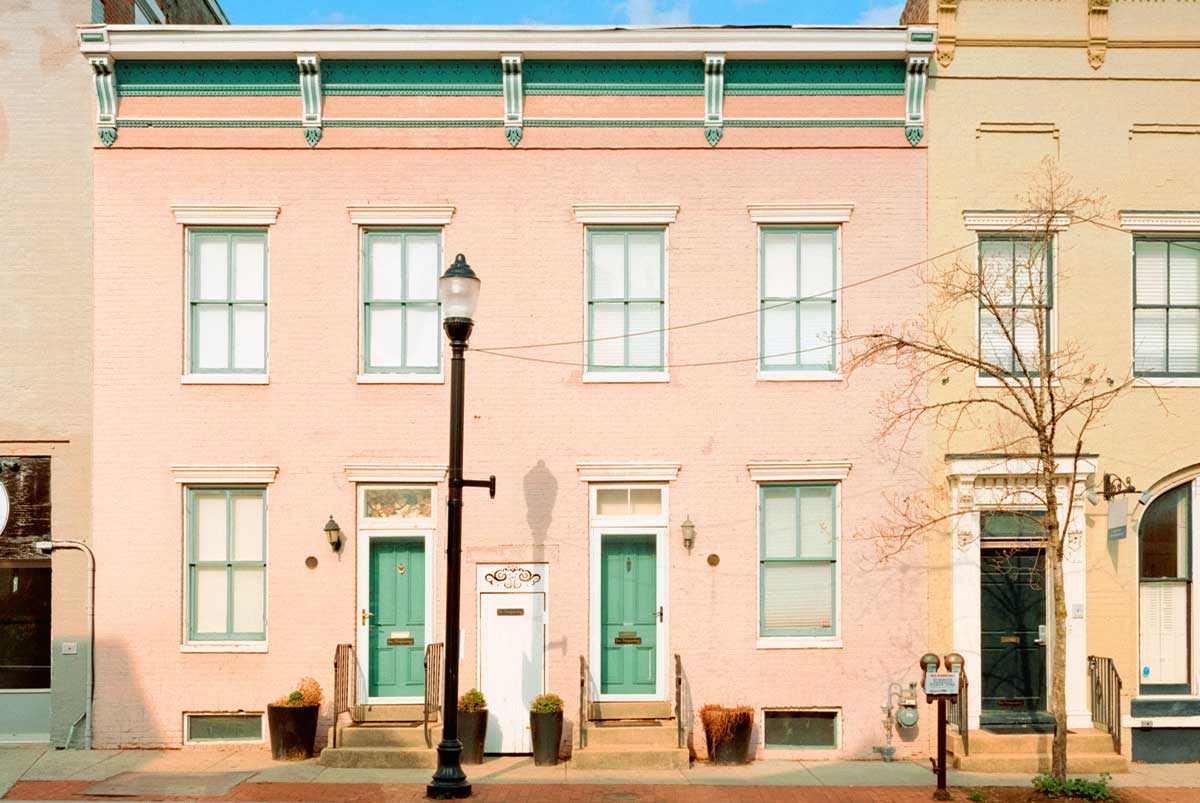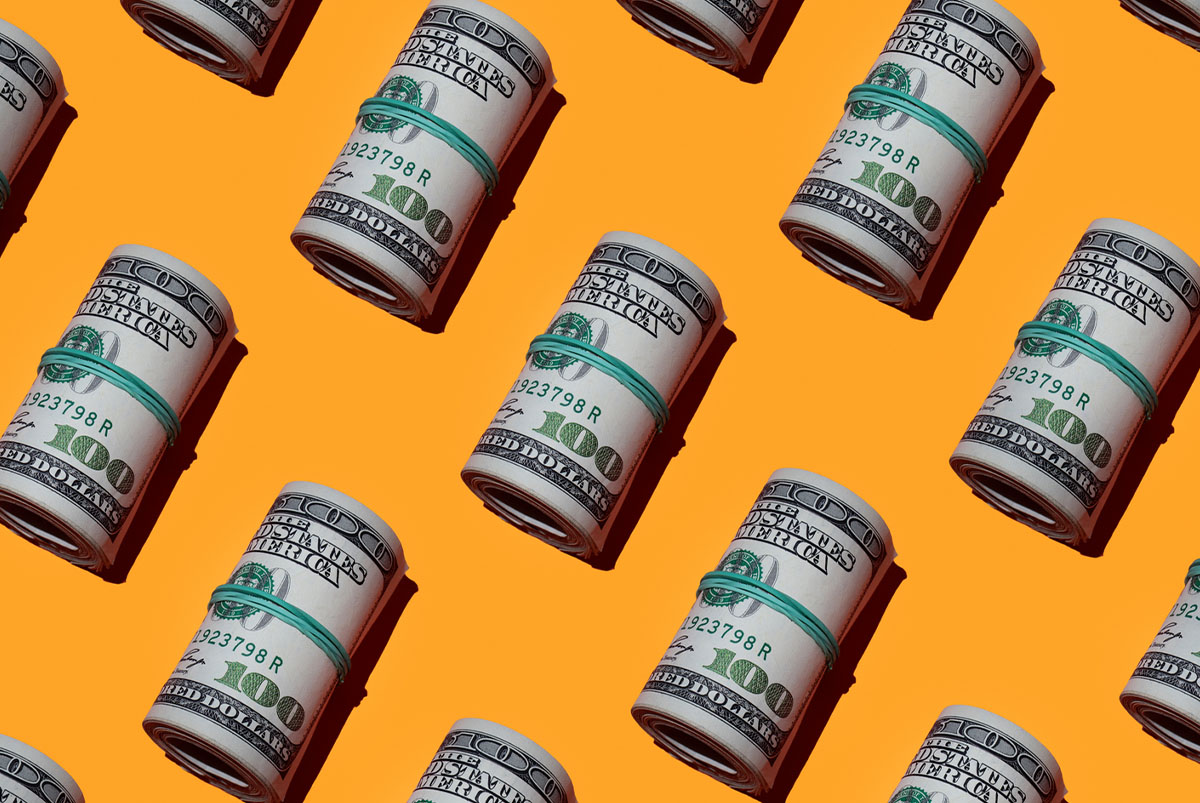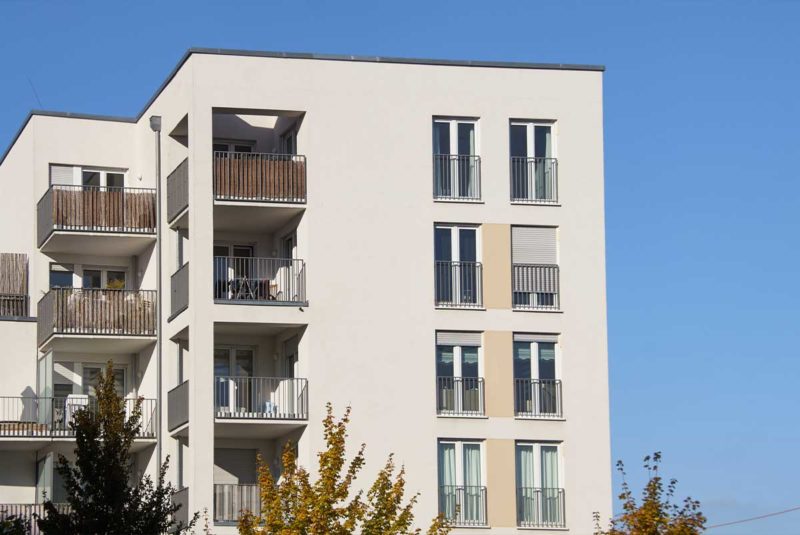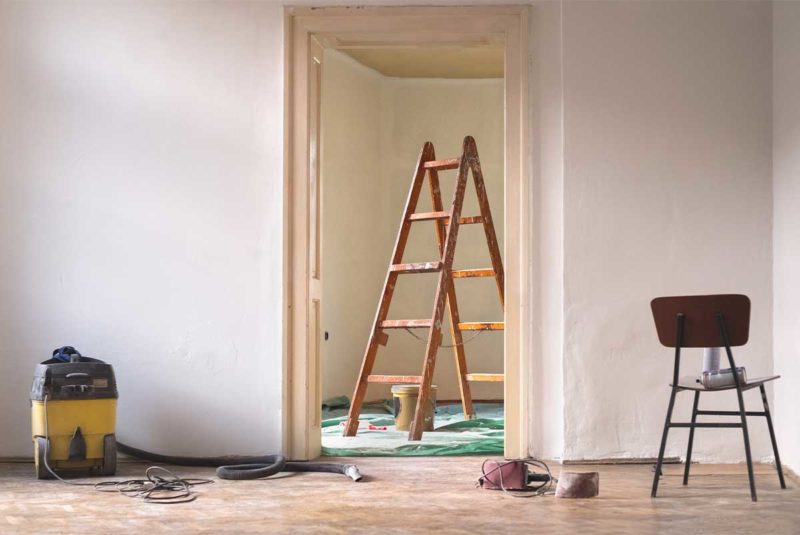Ready To Buy a Home?
Get Approved to Buy a Home
Rocket Mortgage® lets you get to house hunting sooner.
For some people, one home is enough. After all, a mortgage on a single-family home is a solid way to put a roof over your head and invest for the future.
But what if one home isn’t enough for you? After all, beverages are less expensive if you buy a six-pack instead of a single can or bottle. Why can’t it be the same with homes?
That’s where multifamily homes come in. A multifamily home is a building with multiple units. You can choose to live in one unit and rent out the rest. That way, you have a place to live, earn a profit on the rental income and build equity at the same time.
However, if you don’t have the cash available to buy a multifamily home, you’ll need to borrow money to buy the property. In some cases, a Federal Housing Administration (FHA) multifamily loan can help you get the financing you’ll need.
FHA Multifamily Loan, Explained
The FHA was created in 1934 to help stabilize the housing market during the Great Depression, by helping more Americans become homeowners. In 1965, the FHA became part of the Department of Housing and Urban Development (HUD).[1]
The FHA continues to help Americans become home buyers by guaranteeing mortgage loans. While FHA loans are available to anyone, they are usually aimed at first-time home buyers and home buyers with past credit or savings issues that would make it harder for them to qualify for a conventional loan.
Many Americans currently have FHA single-family loans, even for properties with up to 4 units. Properties with 5 units or more are eligible for FHA multifamily loans and are subject to FHA loan limits and qualifications.
Multifamily loans can be further broken down based on whether you choose to live on the property (owner-occupied) or not (commercial).
FHA Multifamily Loans: Owner-Occupied vs. Commercial
Most properties with up to 4 units qualify for an FHA single-family mortgage. To qualify for an owner-occupied loan, the property must have 5 or more units.
Also, each unit must have a complete kitchen and bathroom, and the whole property needs to have been completed or undergone a major remodel within 3 years of submitting your application.[3]
Like any other mortgage, your ability to qualify for the loan will be based on your credit score, income and debt-to-income (DTI) ratio.
You’ll also be required to submit information about the property’s rental income potential.
Unlike single-family loans, which have loan limits based on the number of units you’re purchasing and where you plan to live, FHA multifamily loans don’t have an upper borrowing limit.
To qualify, you’ll need a loan-to-value (LTV) ratio of at least 87% – 90%.[3] That means that you’ll need to put between 10% and 13% down or $10,000 – $13,000 for every $100,000 borrowed.
Owner-occupied loan
To qualify for an owner-occupied FHA multifamily loan, also known as an FHA 223(f) loan, you need to live in one of the units on the property. The loan may be used to purchase properties that can be rented out at fair market value.
Commercial loan
If you want to invest in apartment towers or become a real estate mogul, an FHA multifamily loan may not be right for you. However, the FHA does have separate programs for non-owner-occupied multifamily home loans for those looking to invest in properties they don’t plan to live in.
In some cases, these loans can be used for mixed-use properties. To qualify as mixed-use, at least 51% of the property must be dedicated to residential use.
FHA Multifamily Loan Requirements
Getting an FHA multifamily loan is similar to getting an FHA loan for a single-family home. A traditional FHA loan insures owner-occupied multifamily properties of up to 4 units and offers more favorable terms than a multifamily loan that requires 5 units.
An FHA multifamily loan usually requires a higher down payment and there’s greater scrutiny of the property’s potential rental income.
When applying for an FHA multifamily loan, be prepared to provide information about your:
- Credit score: Like single-family FHA loans, multifamily FHA loans require a minimum credit score of 580 or higher.[4]
- Income: Lenders will want at least 2 years of verifiable income. Be ready to break out your W-2s, 1099s and tax returns.
- Assets: Lenders will look to see if you’ve got sufficient savings and investments or own other properties or assets that can serve as collateral.
- Debt-to-income (DTI) ratio: To qualify for an FHA multifamily loan, lenders will want your DTI at 45% or lower. That means your fixed monthly debts (rent or mortgage payments, credit card minimums, auto loan, personal loans or student loan payments) make up less than 45% of your gross monthly income.
- Down payment: You should expect to make a down payment of 10% – 13%.[3]
- Property type and the number of units: The lender will want to verify that the property meets the 5-unit minimum and will want to know how you intend to use each unit.
- Property use (owner-occupied or commercial): If you plan to take advantage of an owner-occupied property, you’ll need to demonstrate that you plan to live there as your primary residence.
- Appraisal: Your lender will get the property appraised by an FHA-approved appraiser. This helps ensure that you’re not paying more for the property than you can afford.
- Citizenship: To take advantage of an FHA loan, you must provide proof of U.S. residency.
Pros and Cons of FHA Multifamily Loans
Pros
- Lower interest rates: If your credit score is below 620, you’re more likely to get an affordable interest rate with an FHA loan than you would with a conventional loan having the same score.
- Longer repayment terms: Compared to the standard 30-year term for conventional loans, FHA multifamily loans allow for repayment terms of up to 35 years.[3] That can lower your monthly payments, making the property easier to afford.
- Easier underwriting: Because FHA loans are government-backed, their underwriting requirements may not be as stringent as they would be for a conventional loan.
- Easily fold renovation loan(s) into a mortgage loan for one payment: If the property you plan to buy needs updating, you can apply for an FHA 203(k) loan. An FHA 203(k) loan allows you to borrow additional funds to make repairs. You can combine the two loans into a single mortgage.
Cons
- Must be owner-occupied: The government takes the owner-occupied requirement seriously. If you rent out your unit for more than 15 days a year, it’s no longer considered owner-occupied, and you could face fraud charges.
- Home sellers might be less likely to accept an offer with an FHA loan: FHA loan applications can take longer to complete than conventional loans. If the seller is interested in selling quickly, they may be less interested in considering an offer that comes with an FHA loan.
- Mortgage insurance premiums (MIPs): Because FHA loans are government-backed, the government charges its own form of mortgage insurance: MIP. Regardless of the size of your down payment, you’ll pay MIP, which will cost between 0.25% – 0.70% annually based on the loan balance.[5]
Applying for an FHA Multifamily Loan
If you’re thinking about buying a property using an FHA multifamily loan, be prepared to provide lots of information about your income and your plans for the property. Keep in mind that FHA multifamily loans can take time. On average, it can take between 135 days (4 1/2 months) – 6 months from applying to closing.
Before you start down that path, it’s a good idea to know as much about these loans as possible. To start, here are answers to some FAQs about FHA multifamily loans.
Are there commercial FHA loans for nonresidential properties?
The FHA doesn’t offer commercial loans to buy nonresidential properties. You can use an FHA loan for a mixed-use property as long as 51% of the property is dedicated to living space for you and your tenants.
Can I use an FHA loan for a renovation?
While FHA multifamily loans usually require that the properties are in good condition, you can get an FHA 203(k) loan at the same time that you get your multifamily loan or later.
There are two types of FHA 203(k) loans: the limited FHA 203(k) loan for projects that cost less than $35,000 and the standard FHA 203(k) loan for projects that cost more than $35,000 and/or require structural repairs or improvements.
Can I use an FHA loan to buy an apartment building (duplex, triplex, fourplex)?
FHA multifamily loans can be used to finance apartment buildings, like a duplex, triplex or fourplex, but it is more common to buy these buildings using an FHA single-family loan. Why? With a single-family home loan, you’re likely to have a lower down payment and credit score requirement.
Alternative Financing Options for Multifamily Properties
Of course, FHA loans may not be the best option for everyone. If you’re looking to buy a multifamily home, there are other options available.
Fannie Mae and Freddie Mac multifamily loans
Both lenders offer a range of multifamily loan programs that serve everyone from conventional real estate investors to those interested in offering rent-restricted cooperatives (co-ops), housing for older adults, student housing and manufactured housing communities.[6]
They also have higher credit score requirements. You’ll need a credit score of 620 or higher for fixed-rate mortgages and 640 or higher for adjustable-rate mortgages (ARMs).[7]
Fannie and Freddie’s multifamily loans also have higher loan-to-value (LTV) ratio requirements. You’ll need to put a minimum of 20% down (80% LTV).[8] To qualify for the best interest rates, expect to put down as much as 35% (65% LTV).[9]
USDA multifamily loans
The U.S. Department of Agriculture (USDA) also offers multifamily loans for investors looking to build, buy or renovate multifamily homes in rural areas.
The main limitation on these loans is that the rent for individual units can’t exceed 30% of 115% of the area’s median income. Also, the average rent for an entire project (including tenant-paid utilities) can’t exceed 30% of 100% of the area’s median income when adjusted for family size.[10]
If you were planning to use a USDA multifamily loan to start a housing complex for the rich and famous in farm country, you may need to rethink your plan.
Bank balance sheet loans
Another option is to talk to your lender about a bank balance sheet apartment loan. These are nonconforming loans (which means that lenders can’t sell them). They stay on a bank’s balance sheet (hence the name).
Lenders will usually charge higher interest rates and require higher credit scores for you to qualify for a bank balance sheet loan.
FHA Is the Way
Buying a multifamily property can be a great way to get into the real estate market and build wealth for the future – and an FHA multifamily loan can be a valuable way to do it. With an FHA multifamily loan, you can invest in yourself and your community and possibly pay less in interest at the same time.
Take the first step toward buying a home.
Get approved. See what you qualify for. Start house hunting.
The Short Version
- A traditional FHA loan insures owner-occupied multifamily properties of up to 4 units and offers more favorable terms than a multifamily loan that requires 5 units
- FHA multifamily loans can be used to finance multi-home buildings, like a duplex, triplex or fourplex, but it’s more common to buy these buildings using an FHA single-family loan
- Properties with 5 units or more are eligible for FHA multifamily loans and are subject to FHA loan limits and qualifications
U.S. Department of Housing and Urban Development. “Federal Housing Administration – About Us.” Retrieved January 2022 from https://www.hud.gov/program_offices/housing/fhahistory
U.S. Department of Housing and Urban Development. “HUD and Census Bureau Release Findings of Rental Housing Finance Survey.” Retrieved January 2022 from https://www.hud.gov/press/press_releases_media_advisories/HUD_No_20_071
U.S. Department of Housing and Urban Development. “Multifamily Housing – Program Description.” Retrieved January 2022 from https://www.hud.gov/program_offices/housing/mfh/progdesc/purchrefi223f
U.S. Department of Housing and Urban Development. “Section A. Borrower Eligibility Requirements Overview.” Retrieved January 2022 from https://www.hud.gov/sites/documents/4155-1_4_SECA.PDF
U.S. Department of Housing and Urban Development. “MORTGAGEE LETTER 2020-01 TO: All FHA Approved Multifamily Mortgagees.” Retrieved January 2022 from https://www.hud.gov/sites/dfiles/OCHCO/documents/2020-1hsgml.pdf
Fannie Mae. “Fannie Mae Multifamily.” Retrieved January 2022 from https://multifamily.fanniemae.com/
Fannie Mae. “B3-5.1-01, General Requirements for Credit Scores (09/01/2021).” Retrieved January 2022 from https://selling-guide.fanniemae.com/Selling-Guide/Origination-thru-Closing/Subpart-B3-Underwriting-Borrowers/Chapter-B3-5-Credit-Assessment/Section-B3-5-1-Credit-Scores/1032996841/B3-5-1-01-General-Requirements-for-Credit-Scores-08-05-2020.htm#Minimum.20Credit.20Score.20Requirements
Fannie Mae. “Conventional Properties | Fannie Mae Multifamily.” Retrieved January 2022 from https://multifamily.fanniemae.com/financing-options/conventional-products/conventional-properties
Fannie Mae. “ARM 5-5 | Fannie Mae Multifamily.” Retrieved January 2022 from https://multifamily.fanniemae.com/financing-options/conventional-products/arm-5-5
U.S. Department of Agriculture. “Multifamily Housing Loan Guarantees | Rural Development.” Retrieved January 2022 from https://www.rd.usda.gov/programs-services/multifamily-housing-programs/multifamily-housing-loan-guarantees




